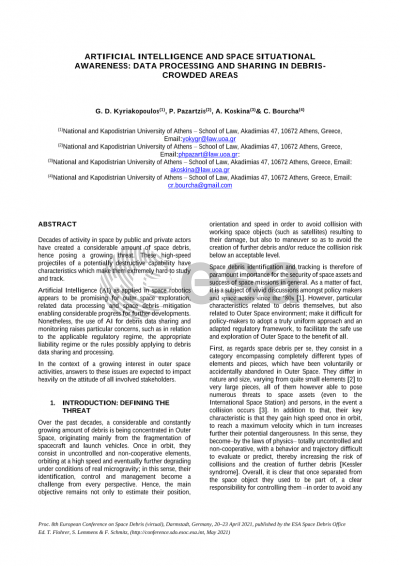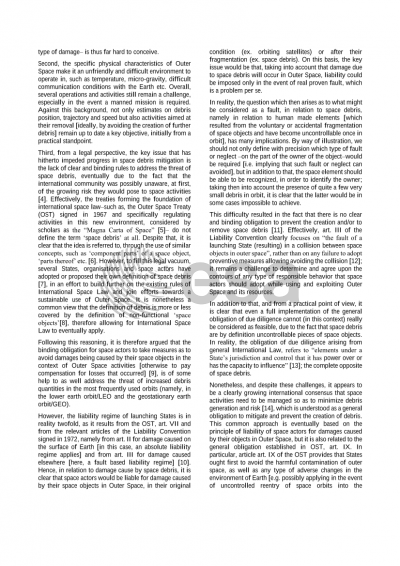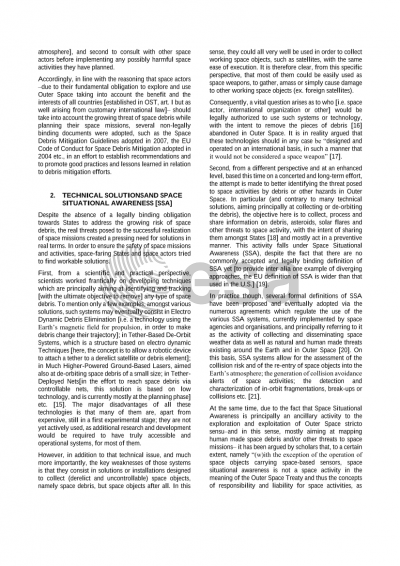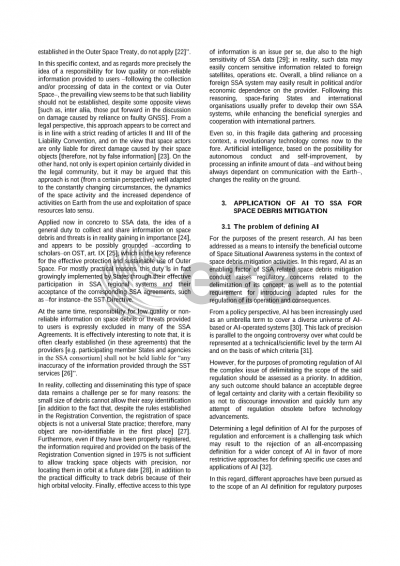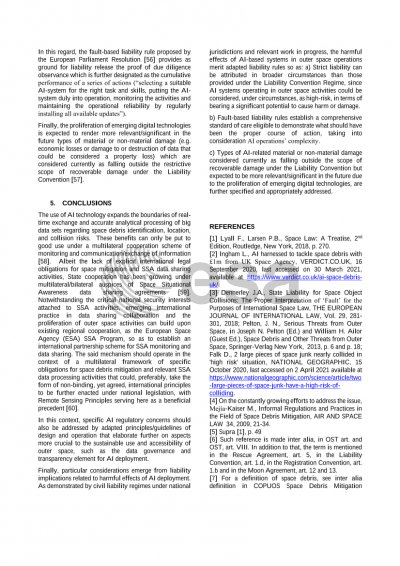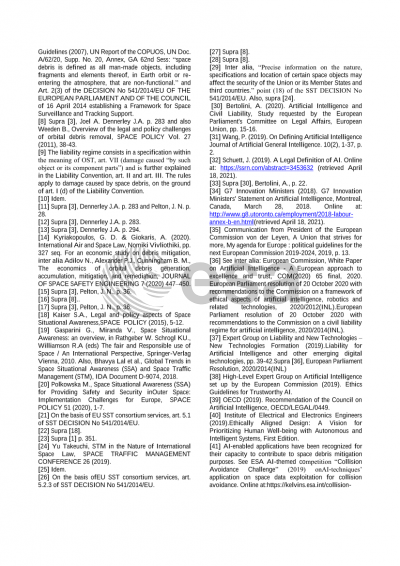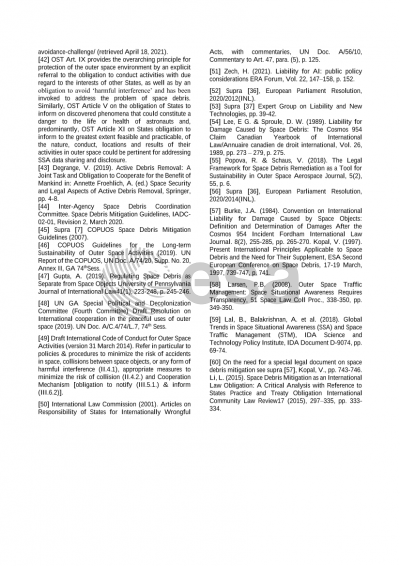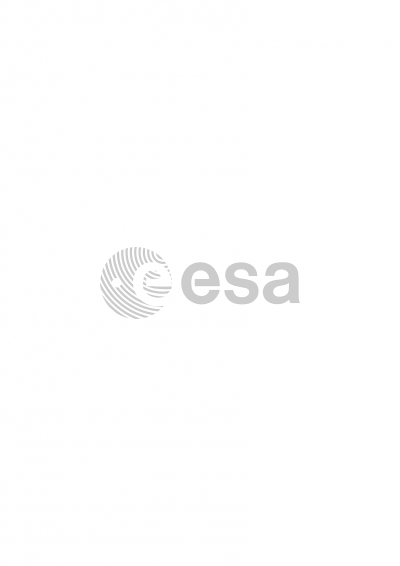Document details

Abstract
Decades of activity in space by numerous stakeholders, both public and private, have created a considerable amount of space debris, which pose a growing threat to space activities. Defined as high speed projectiles of a potentially destructive capability, they have a number of characteristics which make them extremely hard to study and track: uncontrolled and non-cooperative, orbiting at a high speed, degrading under conditions of real microgravity, etc. Their identification, control and management are a challenge from every perspective, and the current aim is to monitor and remove them without generating more.
Fortunately, Artificial Intelligence (ΑΙ) and machine learning systems, as applied in space robotics, appear to be promising in this context as well. As opposed to early years of space exploration, where debris were quite impossible to track, recent technology has allowed considerable progress to be made in the field of debris identification and tracking. The main challenge remains not only to estimate the position, orientation and speed of the debris, but to maneuver so as to avoid the creation of further debris and/or reduce the collision risk below an acceptable level. However, in overcrowded orbital regions “the number of alerts would soar to almost unmanageable levels” [A. Agueda, 2020]. It is in this context that the use of Artificial Intelligence could prove diversely beneficial, by allowing for analytical processing of multiple data and, thus, rapid decision-making while at the same time limiting operational costs. On this basis, the ESA is currently developing a European-wide collision-avoidance system precisely based on machine learning.
From the perspective of international space law, the use of Artificial Intelligence for space debris data sharing and monitoring raises particular concerns in relation to the applicable regulatory regime: First, it is crucial to confirm that space debris data gathering and processing through AI constitutes a space activity, in the sense of the OST; further, the appropriate liability regime could also be a pending issue. However, the main question is the following: what rules should apply as regards data sharing and processing, and –eventually– international cooperation in this domain? As the Space Treaties do not establish a specific obligation for sharing space awareness data and information [S. Kaiser, 2015], the question is whether we should refer to the general principle of cooperation and mutual assistance (enshrined in Art. IX OST), to the obligation of monitoring and tracking assistance under Art. VI REG or to the general–although non-binding obligation of data sharing, as established in Arts. V-XIII of the UN Remote Sensing Principles.
It is clear that, in the context of a growing interest in outer space activities, answers to these issues will to a very large extent determine the attitude of all involved stakeholders. This paper aims at examining the regulatory challenges and prospects of AI technology in outer space against the background of both the numerous hazards and the unquestionable benefits related to the collection and processing of data for the purposes of space debris monitoring and mitigation.
Preview
